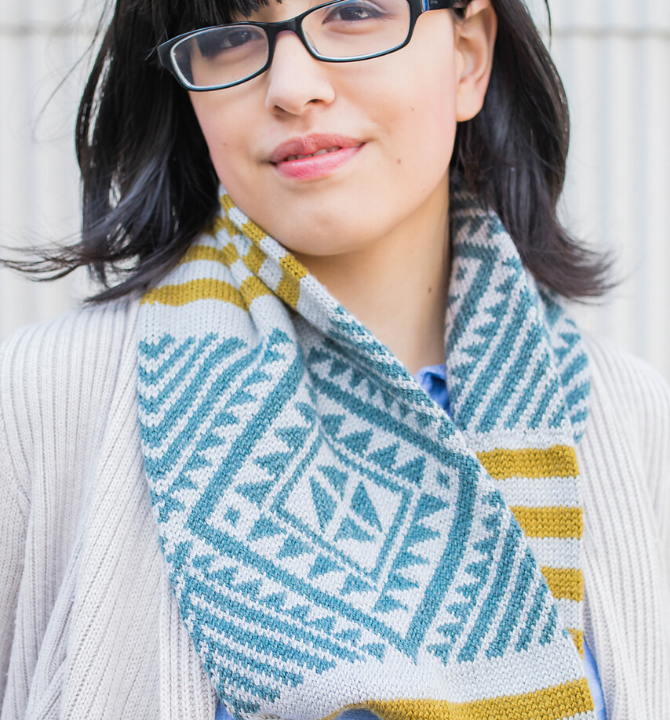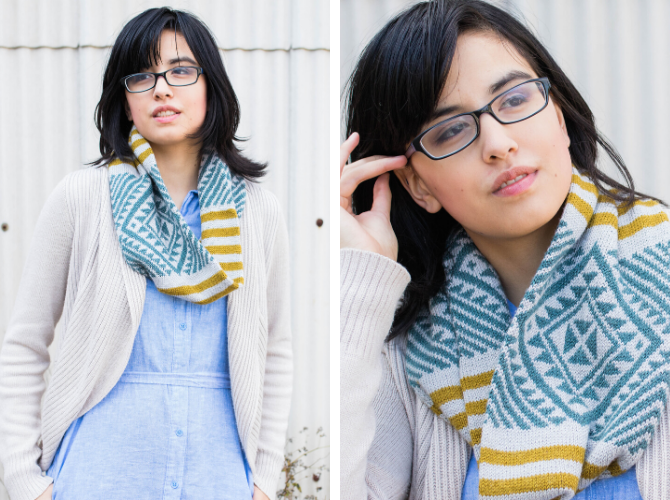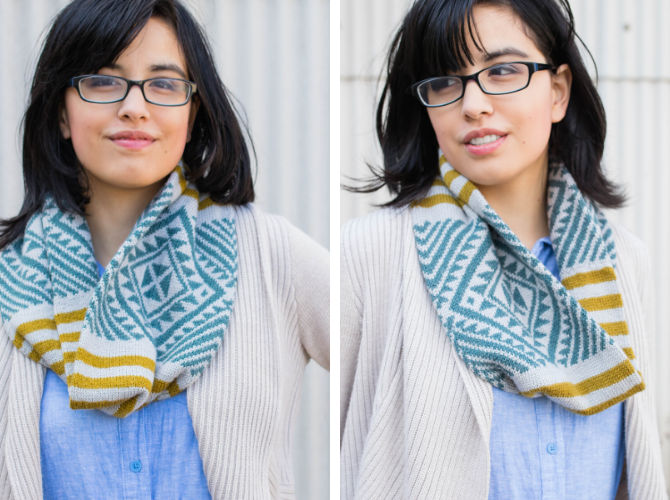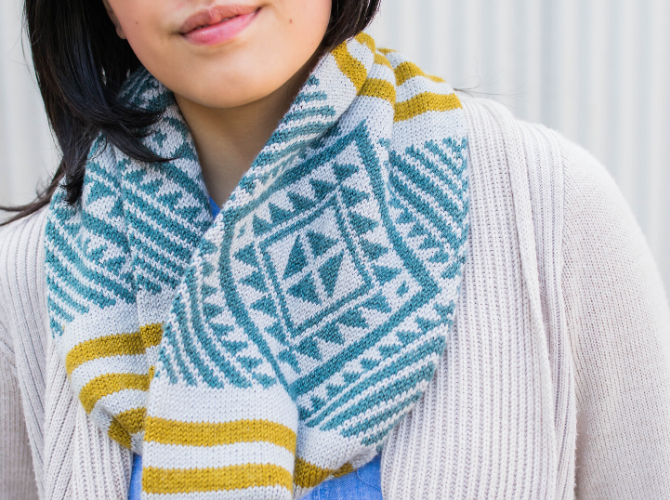Taimana Cowl
On Sale
$9.00
$9.00
Pay What Works: In an effort to find a balance between more financial accessibility and sustainable pricing, I now offer a “Pay What Works” model. This allows for financial flexibility while still valuing and respecting the work and energy I and others provide in the making of this pattern. The price shown on Ravelry is the “true” value of the pattern that best reflects the work put into creating this design.
To purchase the pattern at a price point that is more accessible to you, use the coupon code at checkout listed next to the price point. The prices indicate the price you will pay, not the discount amount. No coupon code is needed for the highest price point.
AROHA1 - $4.50
AROHA2 - $5.40
AROHA3 - $7.20
NO CODE - $9.00
Please note for those located in Europe that VAT is applied at checkout.
A tubular cowl with an intricate geometric motif that holds a great cultural significance.
The main colorwork motif of the Taimana Cowl (Te Reo Māori for “Diamond”), like the Kumura Cowl, is heavily influenced by traditional Māori tāniko designs, geometric patterning woven onto borders of cloaks and dresses. This particular geometric formation is called “Pātikitiki”, easily identifiable through the singular diamond as the dominant motif. The Pātikitiki motif is meant to resemble the flounder fish, which used to be a common food source for the Māori.
According to the Ngāti Porou iwi (tribe), which my mother hails from, the Pātikitiki acknowledges the hard work that the women contributed to the iwi through supplementing the food supplies and even hunting the fish at night, when everyone else was fast asleep.
In addition to the intriguing cultural history behind the design, you’ll find that working up this pattern hits the sweet spot between mindless and engaging knitting. The colorwork motif is both addicting and intuitive, and the stripe sections knit up fairly quickly. Use a merino/silk blend for warmth, softness and an attractive sheen, and this cowl will quickly make itself a welcome addition to your handmade wardrobe.
Pattern is intended for intermediate to advanced knitters. For those wanting to learn new techniques, written and video tutorials are provided in pattern.
Special techniques:
- Provisional cast-on
- Kitchener stitch
- Stranded knitting
- Knitting in the round
- Reading color charts
- Needle: US size 4 (3.5mm) and US size 5 (3.75mm) 16” (40cm) circular needles or size to obtain gauge. Two sets of needles are required, especially if your gauge differs from non-stranded knitting to stranded.
Yarns Used: Shibui Knits Staccato (Fingering / 4 ply; 70% Merino, 30% Silk ;191 yards / 50 grams). Special thank you to Shibui Knits for the yarn support.
- 2 skeins in Ash (background color)
- 1 skein in Pollen (stripe color)
- 1 skein in Fjord (motif color)
Yardage:
- Background color: 310 - 380 yards / 280 - 345 meters
- Stripe color: 150 - 190 yards / 135 - 175 meters
- Motif color: 150 - 190 yards / 135 - 175 meters
- Gauge: 32 sts and 40 rows per 4” / 10cm
Other Notions: Stitch markers, darning needle, scrap yarn, crochet hook, needle stoppers
Final Measurements: Width 8” (20cm) ; Length / Circumference (after seaming) approx. 30” (76cm)








